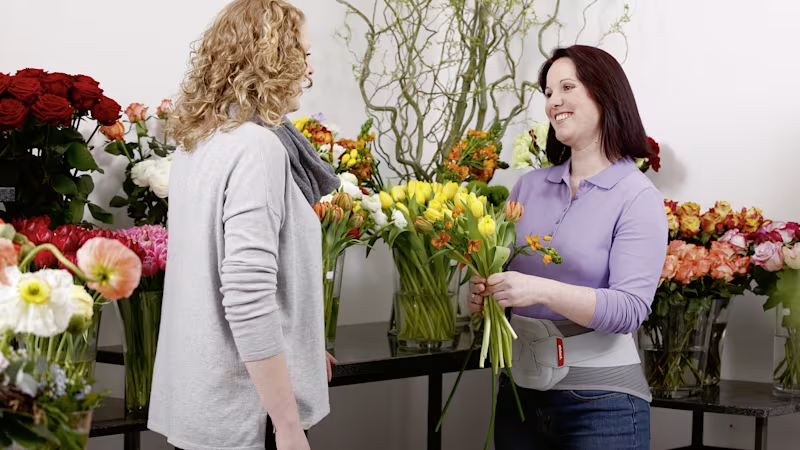


Órtesis de columna cervical y espalda
Para la espalda y la columna cervical: las órtesis de Ottobock estabilizan y activan. Calidad y comodidad de uso para una movilidad indolora.
Para la espalda y la columna cervical: las órtesis de Ottobock estabilizan y activan. Calidad y comodidad de uso para una movilidad indolora.
Órtesis de columna cervical y espalda: estabilidad y alivio del dolor para la columna vertebral y la espalda
La columna vertebral estabiliza todo el cuerpo humano. Nuestra espina dorsal está compuesta por 24 vértebras y 23 discos intervertebrales. Es responsable de mantener una postura erguida y hace posible el movimiento de la parte superior del cuerpo. Pero la columna cervical y la espalda también pueden estar debilitadas, por ejemplo, debido a enfermedades como la osteoporosis, a un accidente o a hábitos sedentarios y la falta de movimiento.
La consecuencia pueden ser dolores intensos. Las órtesis de espalda y las órtesis para la columna cervical pueden ser de ayuda en estos casos. Apoyan y estabilizan las partes del cuerpo afectadas. Con correajes elásticos y férulas rígidas de plástico o de metal, las órtesis de espalda y para la columna cervical procuran un apoyo específico y pueden aliviar el dolor.
¿Cuándo es necesaria una órtesis de espalda?
Siempre es un médico quien prescribe una órtesis para la espalda o para la columna cervical. Generalmente es necesaria tras un accidente, en caso de dolor agudo, tras una operación o debido a una enfermedad. A menudo, en las personas mayores, la osteoporosis provoca dolores e inestabilidad en la columna vertebral. También tras una hernia discal, lumbago o durante el embarazo puede ser necesario utilizar una órtesis. Las órtesis de espalda prescritas por el médico complementan en este caso el tratamiento formado por fisioterapia, masaje o terapias de calor. Las órtesis pueden enderezar, corregir y estabilizar determinadas regiones del cuerpo. De este modo impiden posturas incorrectas y procuran descarga.
El médico no solo prescribe la órtesis, sino que también estipula con qué frecuencia y durante cuánto tiempo debe utilizarse. Los pacientes deben habituarse al uso de una órtesis, para lo que solo deben llevarla durante poco tiempo en un primer momento. El tiempo de uso va aumentando paulatinamente. Algunas órtesis de espalda deben permanecer puestas durante varias horas, o incluso todo el día, mientras que otras únicamente al realizar determinadas actividades físicas para ofrecer estabilidad.

El día a día con una órtesis de espalda
Ponerse una órtesis para la columna cervical o un medio auxiliar para la espalda, o incluso la mano, requiere algo de práctica. El médico o el técnico ortopédico le explican y le muestran con precisión cómo puede ponerse solo el correaje para la espalda o la férula. Las órtesis de Ottobock son fáciles de colocar, a menudo incluso con una sola mano. El uso debe ser lo menos complicado posible, ya que el tratamiento solo tendrá éxito si la órtesis de espalda se utiliza según la recomendación. Y una comodidad de uso elevada aumenta la disposición a utilizar la órtesis de forma regular. Los materiales flexibles, las bandas elásticas y los elementos de apoyo adaptados específicamente garantizan un ajuste óptimo. Además, la mayor parte de las órtesis son estrechas y discretas para que puedan llevarse cómodamente debajo de la ropa.
También en el caso de correajes de mayor tamaño, el material es transpirable para evitar una sudoración intensa bajo la órtesis incluso a altas temperaturas. Obviamente, todas las órtesis de espalda de Ottobock pueden lavarse, algunas de ellas en la lavadora. Respete las instrucciones de cuidado para que las órtesis tengan una vida útil lo más larga posible.
Ottobock fabrica desde 1919 productos que mejoran la calidad de vida. Ya sean órtesis, prótesis o medios auxiliares como sillas de ruedas: a pesar de las limitaciones físicas —temporales o permanentes—, con estos medios es posible llevar una vida activa. Además, todos los correajes para la espalda de Ottobock se caracterizan por su elevada comodidad de uso. De esto se encargan, entre otros, los materiales transpirables empleados. Ya sea para la columna lumbar, la columna torácica o la columna cervical: cada órtesis puede adaptarse individualmente para que resulte cómoda y se ajuste correctamente. Un técnico ortopédico adaptará con precisión a su cuerpo los elementos de apoyo como férulas, barras o valvas.
Volver a la vida cotidiana: en 3 pasos hasta la órtesis de Ottobock
- Aquí encontrará un resumen de las órtesis y correajes que pueden ser adecuados para usted. Lleve consigo esta lista la próxima vez que acuda al médico.
- Consulte a su médico cuál de las órtesis es la más adecuada para su cuadro clínico. Seguidamente, su médico le extenderá una receta para la órtesis correspondiente.
- Acuda con la receta a una ortopedia. Allí recibirá su nueva órtesis después de haberse adaptado con precisión a sus medidas corporales.